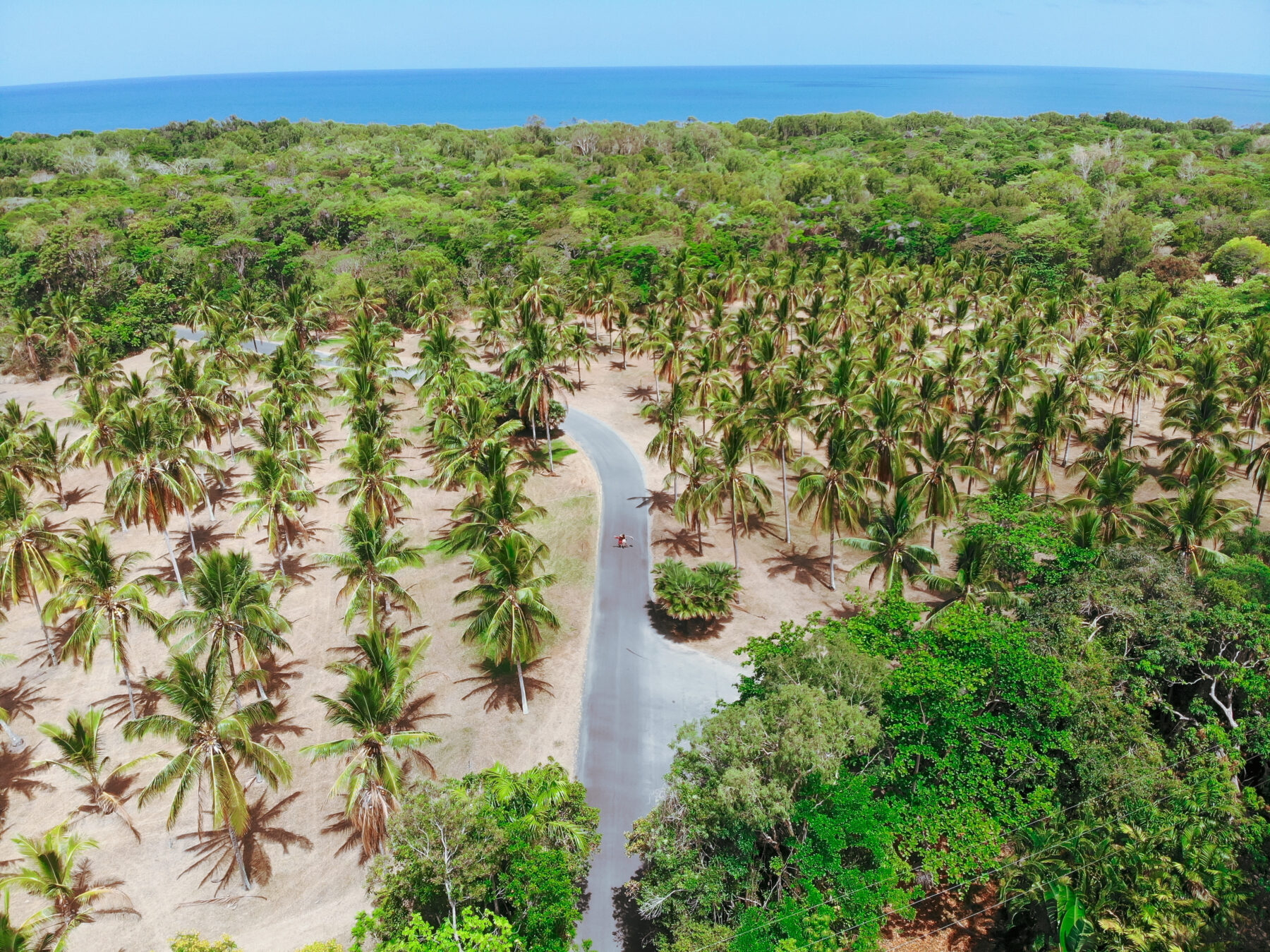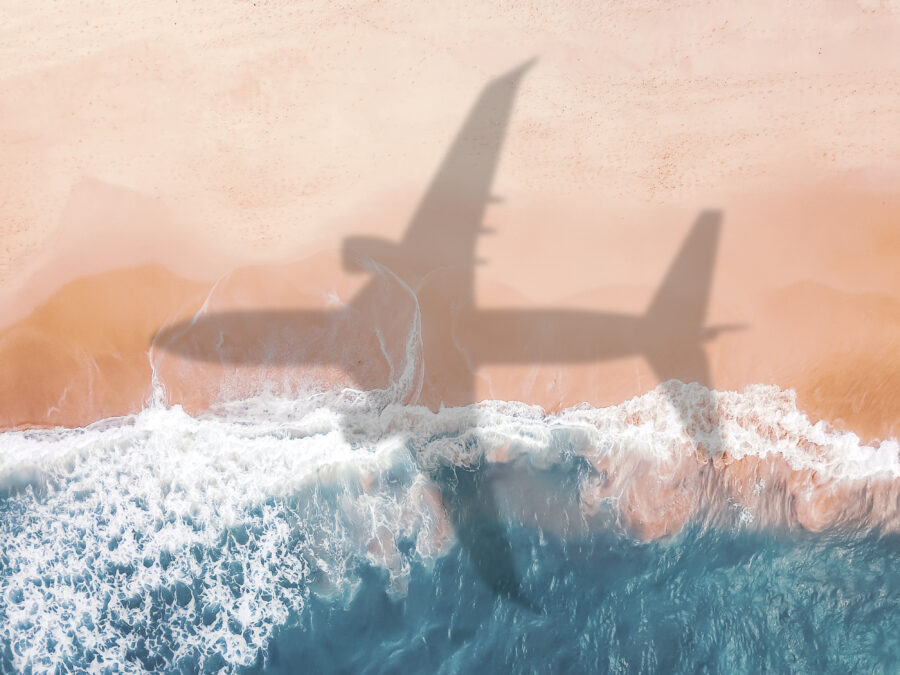Approaching the luxurious Thala Beach Resort by seaplane, you immediately notice something unusual. Perched on a rocky headland between Cairns and Port Douglas in far north Queensland, where coconut palms and eucalypts of the dense rainforest cascade down to the picture‑postcard sandy beach, the 85 guest bungalows, restaurants, reception area and spa are certainly conspicuous from above…by their absence.
In fact, it’s almost impossible to believe such a thriving hotel complex is there at all, because all you can see from above is the vast tangle of trees that stretch from the unspoilt shoreline across to the gentle slopes of Mowbray National Park in the distance.
Thala Beach is one of a growing number of eco-hotels where sustainability is infused into every feature – from the passive and low‑energy cooling systems, property‑to-plate food, onsite wastewater treatment and no single‑use plastics to the revegetation of what used to be a degraded sugar plantation into a biodiverse habitat teeming with wildlife.
“In the early days, ecotourism wasn’t a term you could take to market,” resort director Seton Prettejohn says, “and it was a battle to differentiate ourselves within the luxury sector. But over the last decade, we’ve seen it move into the mainstream consciousness. Guests want less glitz and more green.”
They certainly do. The dramatic surge in demand is driven by customers rather than any new legislation. More than 70 per cent of Australian tourists are looking for more sustainable holidays, and there’s a growing realisation that international air travel is unlikely to become environmentally friendly anytime soon. Indeed, there’s an inherent contradiction in jetting halfway around the world to stay in a carbon‑neutral eco‑lodge.
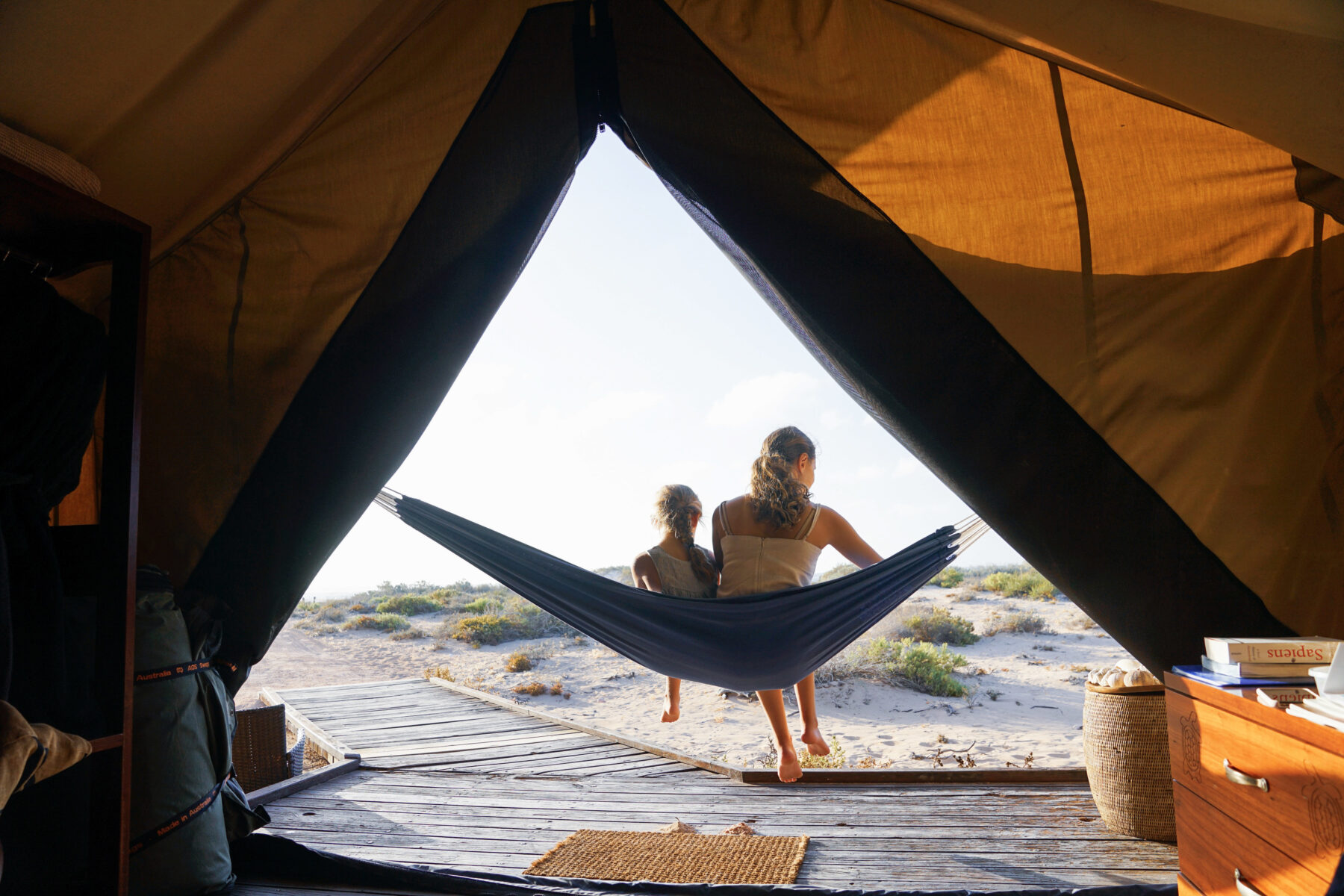
The term “ecotourism” has been around since the 1960s, but it exploded in popularity at the start of the 21st century as concerns about climate change grew. According to Ecotourism Australia, it can be defined as: “Ecologically sustainable tourism with a primary focus on experiencing natural areas that fosters environmental and cultural understanding, appreciation and conservation.”
As well as reducing carbon emissions through the use of biofuels and renewable energy, it encompasses: the use of native, locally sourced food; engaging of Indigenous cultures; recruiting from neighbouring communities; not interfering with nature; and the restoration of deforested areas. The sector already employs 14,000 Australians, with annual revenues nudging $2 billion. One Nielsen survey found 2.2 million Aussies were planning an eco-trip, three‑quarters of them under the age of 45.
Last year, the federal government committed to THRIVE 2030, a long‑term COVID-recovery strategy to grow tourism by $64 billion by 2030 in a sustainable, climate‑friendly way.
Globally, the ecotourism sector grew 6 per cent last year to be worth $300 billion (US$200 billion), and is expected to double in value by the decade’s end. “Sustainability is increasingly a key consideration in travel decision-making,” says Tourism Australia managing director Phillipa Harrison. “It’s no longer [only] a nice ‘to do’ – it’s good business hygiene. There’s a very strong connection between sustainability and cultural travel, with First Nations people arguably the pioneers of sustainability for more than 60,000 years.”
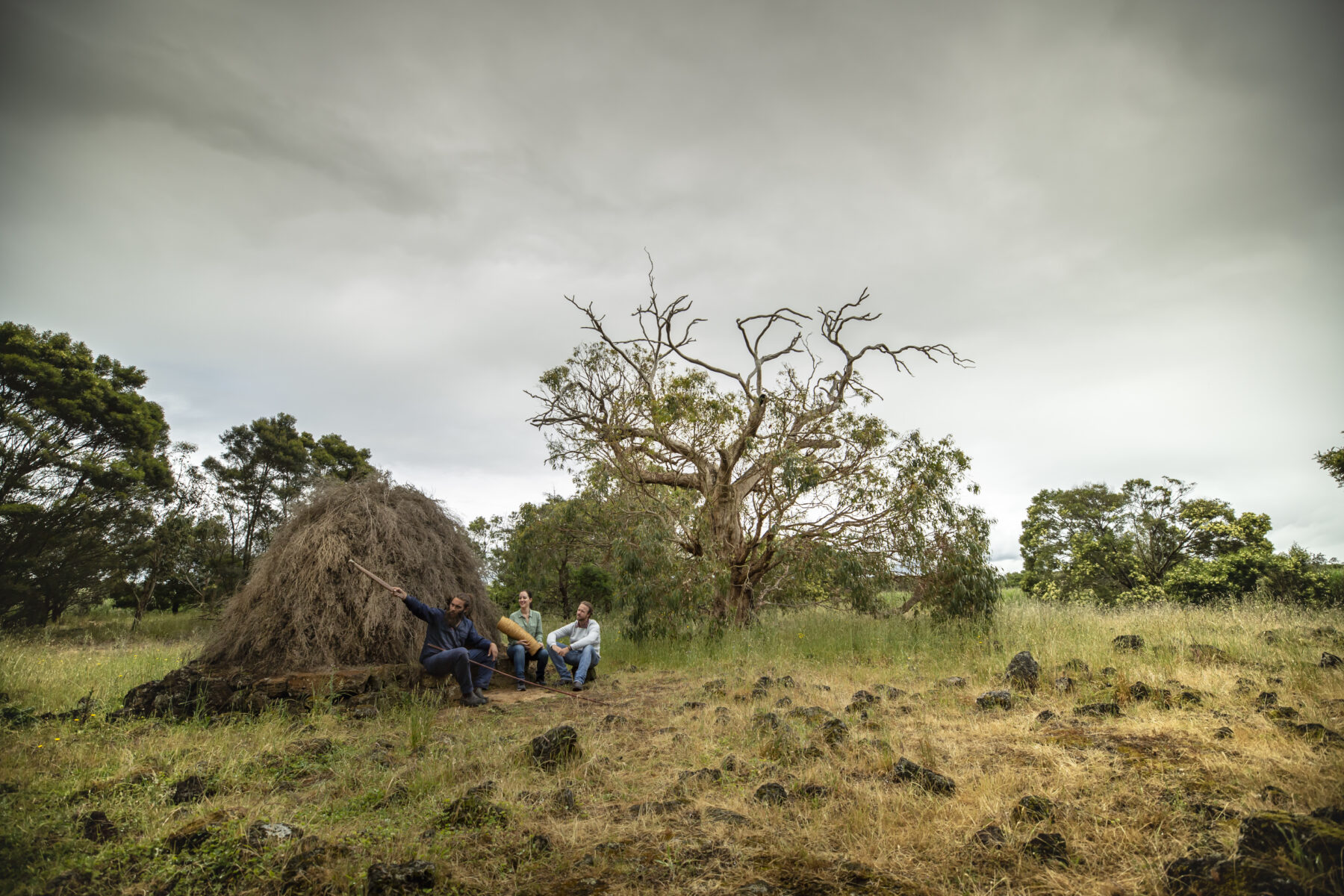
Hundreds of tour operators are now eager to boast about their green credentials, but knowing how honest they’re being isn’t always clear‑cut. So‑called greenwashing involves making deceptive or exaggerated sustainability claims, a practice that’s rife in Australia according to West Australian climate scientist Dr Bill Hare. The UN adviser claims that companies, including airlines, rely too heavily on carbon offsetting to reach emissions targets instead of reducing their fossil-fuel use. The practice muddies the waters when it comes to assessing just how planet-friendly a holiday really is.
“Australia was an early leader in ecotourism, but greenwashing has been an issue ever since the term was first coined,” says Anne Hardy, associate professor in tourism and society at the University of Tasmania.
Five questions to ask
Here, Anne reveals five questions ethically minded travellers need to ask before embarking on their next trip.
Do you support local communities?
Find out if companies are owned locally or are part of a multinational chain whose profits may be channelled overseas. Ask what they do for their staff and local villages in terms of sponsoring events, donating to charities or buying from local suppliers. Once you’re there, see if the souvenirs in the gift shop are made by Indigenous craftspeople or imported from elsewhere.
How do you treat your staff?
Many hotels commit to employing a sizeable percentage of locals and even provide housing, childcare and healthcare. Are any such policies mentioned on their website? Another good sign is that staff are on permanent contracts rather than hired casually.
What’s your impact on the environment?
Even a so‑called eco-lodge can emit a large amount of carbon dioxide. So investigate what practices it undertakes to minimise emissions, such as using renewable energy, recycling, serving locally produced in‑season foods and protecting ecosystems.
A principled and committed tour operator will seek to teach its visitors about the importance of conserving nature, respecting Indigenous cultures and avoiding unnecessary intrusion into animal habitats.
Do you have any certifications?
There are a variety of environmental awards and accreditations, but a sticker displayed in reception isn’t a guarantee of best practice.
The Global Sustainable Tourism Council and Australia’s own ECO Destination Certification – the first of its kind in the world – are both widely respected and show that operators use resources wisely, contribute to communities and conserve their flora and fauna. You can find all the certified operators online in Ecotourism’s Green Travel Guide. greentravelguide.org
Are you involved in regenerative planning?
Sustainable tourism isn’t just about reducing impact, it’s about giving back more than you take through reforesting land, encouraging native plants and actually capturing more carbon than you release.
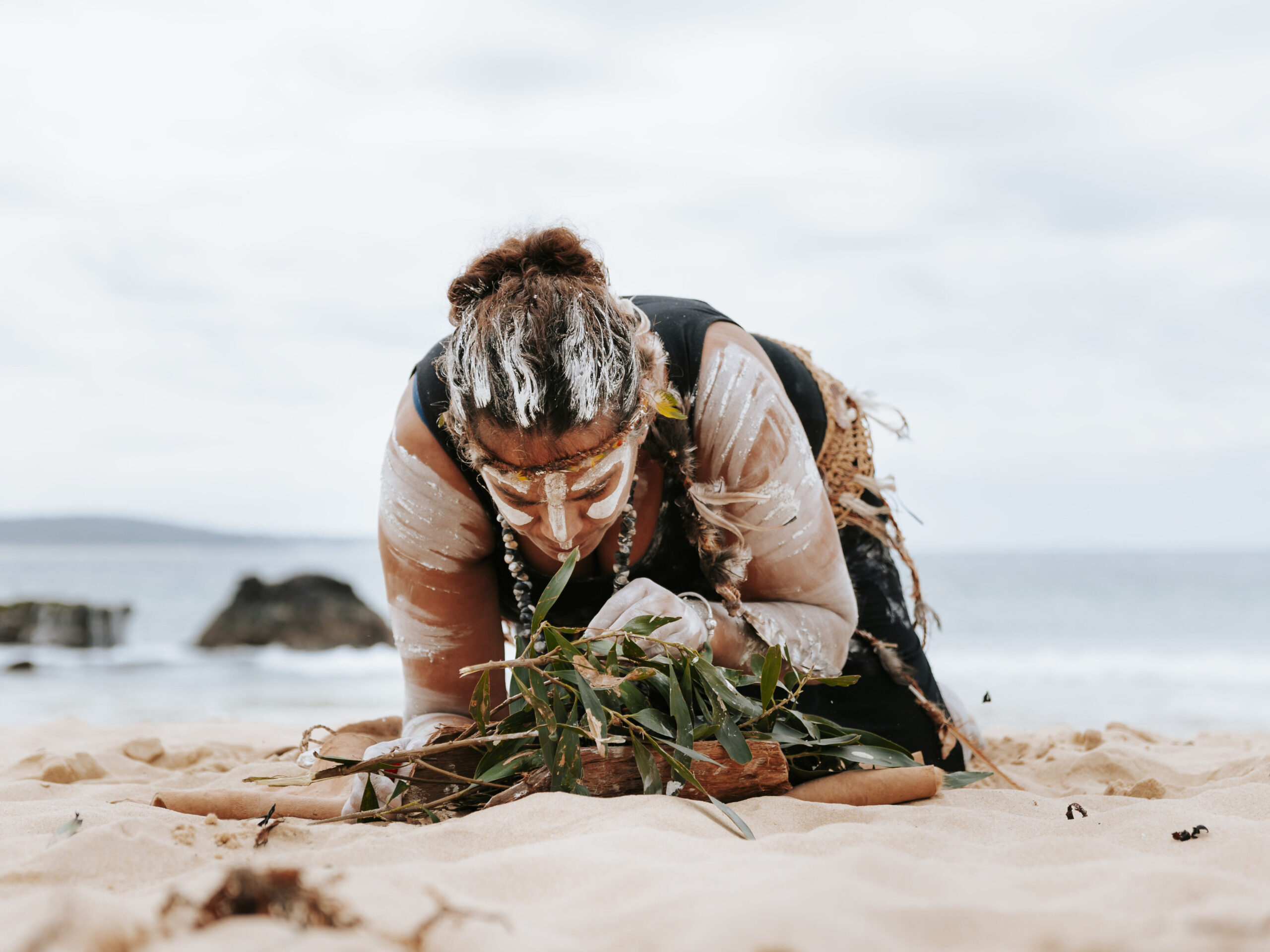
Taking small steps
Holidaying more responsibly needn’t involve pitching a tent in a muddy field and cooking plant‑based sausages on a solar-powered portable stove. There are easy ways to make any trip a bit more eco‑friendly.
If you do have to travel by air, instead of trusting the airline’s carbon offsetting scheme, make a donation to one with impeccable credentials (see Can air travel ever really be sustainable? on page 82). Buses and trains are the best option, but hiring an electric car for the trip instead of your gas guzzler is a good first step.
At the hotel, hang a “Do not disturb” sign on your doorknob so it isn’t vacuumed every day and avoid the laundry service because each guest’s clothes are washed separately – even if it’s just half-a-dozen pairs of underpants. Draw the blinds to reduce air conditioning and take the leftover soap and toothpaste home with you.
“Have conversations with people who live there and get their recommendations for nearby sustainably run businesses,” says Ecotourism Australia CEO Elissa Keenan. “It’s a great way to get a feel for the personality of a region.”

Getting there more responsibly
Before most of us can take part in ecotourism activities, we need to arrive at our destination – and travelling from A to B makes up a major part of tourism’s carbon footprint.
How do the different transport modes weigh in? (average CO2 emitted per 1km travelled)
Source: Our World in Data, based on 2018 UK transport figures.
Infographic credit: Mike Rossi
Next trends in sustainable travel
Elissa is confident that, as momentum towards low-carbon holidays continues to gather pace, Australia’s travel industry will be transformed as never before. And any short‑term pain in coping with the new realities will be more than offset by the enormity of the opportunities.“Ecotourism visitors want to feel good about how they spend their money and know they’re having a positive impact,” Elissa says. “They care about Indigenous communities and increasingly want to interact responsibly with nature rather than just grabbing a quick Instagram selfie.”
However, we’re not yet in a position to pat ourselves on the back. “Australia needs to do a lot more to meet global targets,” Elissa adds. “We have a wonderful destination and are seen as sustainable, but we’re at risk of falling behind our key global competitors.” She’s identified four future trends that she predicts will reshape tourism over the next few years.
Mainstream sustainability
“Tourists want sustainable and responsible options. We need to commit now to really embedding sustainability as a normal part of business, not a ‘nice‑to‑have’,” Elissa says.
A deeper connection with nature
A key pillar of ecotourism is “leave only footprints” – to observe rather than blunder into nature. And those footprints better be on clearly defined official paths, because it’s easy to destroy delicate ecosystems if they aren’t. “The ultimate is to experience an area with a local guide who can talk about conservation and how to preserve our natural wonders,” Elissa says.
Cultural immersion
“Embracing stories of the destination from Traditional Owners and hearing about the cultural history is a very strong trend and a powerful driver for travellers,” Elissa says. “We’re also seeing a huge increase in demand for Indigenous tourism experiences.”
Wider accessibility
Ecotourism Australia has campaigned tirelessly to open up remote wilderness areas to tourists and staff of all physical abilities, and the impact has been spectacular. In 2021, 17 per cent of travel groups included someone with a disability or long‑term health condition and together they ploughed $13.5 billion into the industry.
“Wherever you go, seek to actively give back and leave the place you visit in a better state than when you arrived,” Elissa says. It’ll also contribute to your own health and wellbeing.”
Perhaps when the huge resort hotels of the future are built, they won’t involve 150-tonne diesel earthmovers carving vast scars across pristine rainforests. Maybe at least some will blend seamlessly in with the native flora and be almost invisible to anyone flying over the top in a hydrogen-fuelled plane.
Eco-travel leaders
Sites older than the pyramids
The Budj Bim Cultural Landscape in south-western Victoria is a complex series of weirs and dams engineered more than 6000 years ago by the Gunditjmara people to trap eels. Today, it’s a popular spot for tourists.
“We tell the big story of how we’ve sustained life here for thousands of years: it’s a story of resilience, adaptation, sustainability – and standing up for what’s right,” ranger Braydon Saunders says. “We sustainably managed fish and eels and harvested them at choke points using woven baskets. We were Australia’s first farmers.”
Eco safaris
Guests staying at the Arkaba Conservancy in South Australia’s Flinders Ranges can join conservationists on safaris to study endangered animals and survey native vegetation. The historic homestead may be an oasis of comfort, but it’s committed to a comprehensive range of sustainable practices, including undertaking an ambitious rewilding program.
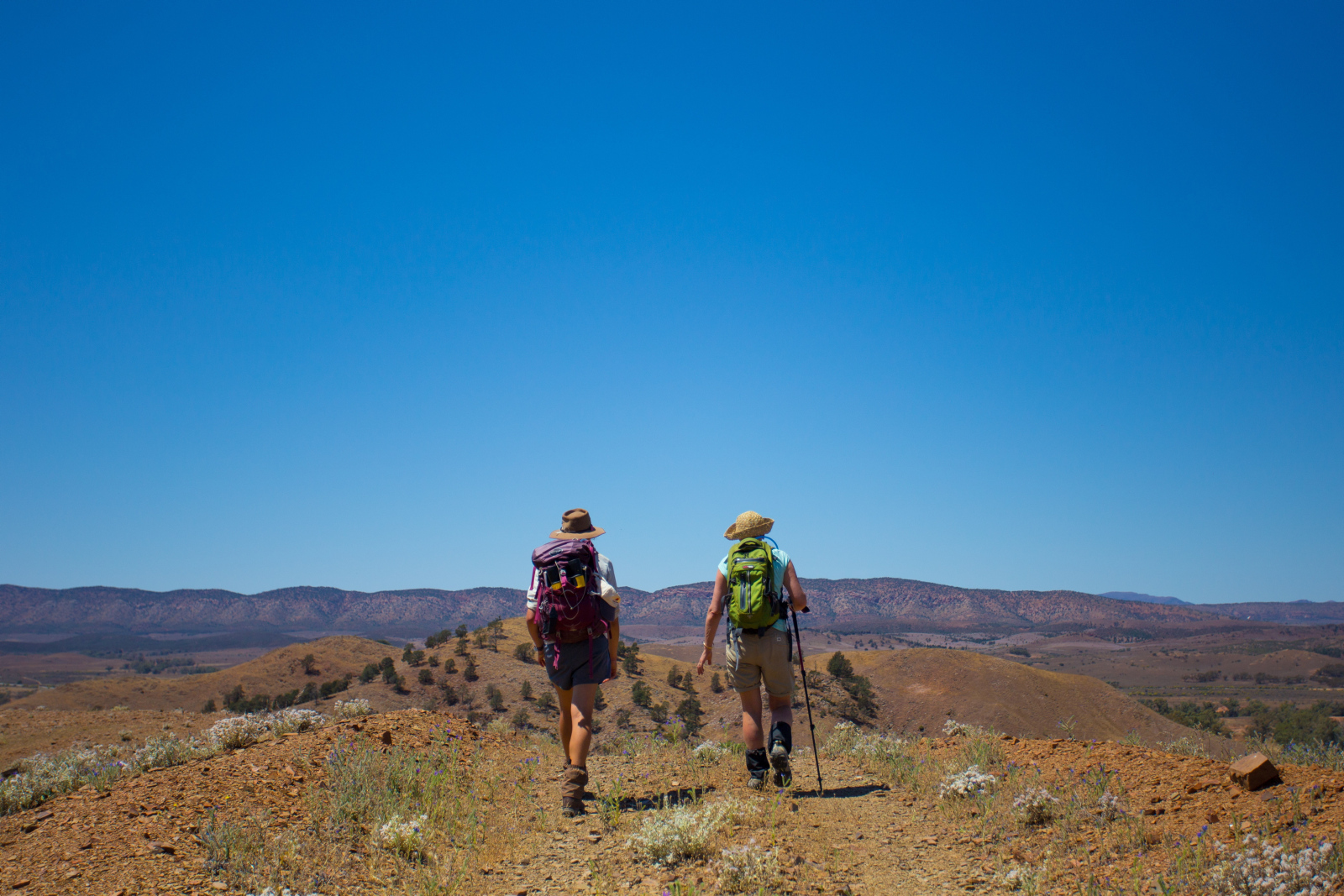
Desert sanctuary
Built on a dune outside Alice Springs as an experiment in sustainable living, the carbon‑neutral Earth Sanctuary has developed into a major attraction, educating its 16,000 annual visitors in ecology, astronomy and Aboriginal culture.
“It started as a concept, asking the question, ‘What does it take to live sustainably on this planet?’” says founder Tom Falzon, who established the residence with his brothers Ben and Dan, a former Neighbours star. “We created a 40ha sanctuary where people could come and hear how we went about living sustainably – and hopefully be inspired and empowered to change their own lives.
“Tourism is the front line for introducing people to the natural world. Operators have a huge opportunity to play a key role in shaping the future. We must clearly connect the tourism experience to reducing our collective carbon footprint and preserving nature and culture.”
Bed, breakfast and car
Mantra Southport Sharks on Queensland’s Gold Coast last year became the first Australian hotel to offer use of a Tesla as one of its amenities, organised through local electric car-share startup Outbound, which plans to roll out the $30-an-hour service to holiday accommodation nationwide.
Revealing the wetlands
Jamie van Jones and her husband, Sebastian, were naturalists on expedition ships when COVID hit. But rather than stay cooped up in their Perth home, they decided to start an expedition company of their own, Salt and Bush Eco Tours, to explore the wetlands, creeks and national parks in the Swan Coastal Plain, just 10 minutes drive from the centre of Mandurah in Western Australia. They set up eco-workshops, kids’ nature clubs, and classes on environmental management.
“We spark people’s wonder,” Jamie says. “Then it’s a natural segue to talking about conservation issues. We focus on positive stories, particularly the resilience of the bush, and simple actions we can take to help save it.”
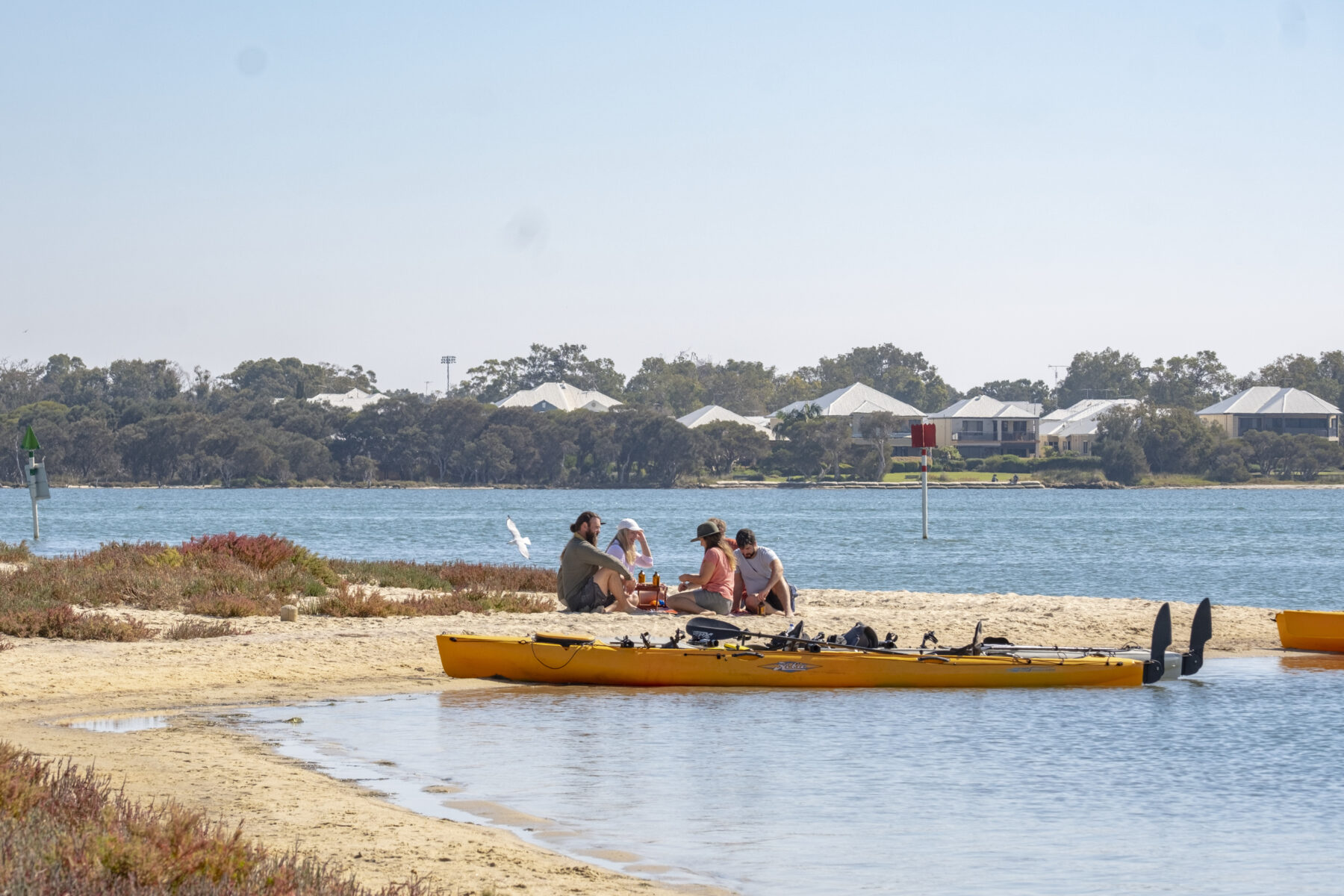
Sal Salis Ningaloo Reef
Sal Salis Ningaloo Reef is a beach safari camp in the dunes of Cape Range NP near Exmouth in WA. Each of 15 eco-luxe wilderness tents offers views of the surrounding bush and beach. It’s constructed above ground to protect the flora, fauna and sandhills and uses boardwalks to prevent soil erosion. Almost 100 per cent of the camp’s power is from solar. The site uses gas hot water. The tents or lodge operate without air conditioners, instead leveraging naturally cool coastal breezes. Each tent is allocated 20 litres of water per person, per day and implements a three-minute shower policy.
Adventure World Travel
Responsible travelling is a key mission statement. The company’s objective is to reduce the negative impacts and increase the benefits of tourism by providing authentic, ethical, sustainable experiences that celebrate and conserve heritage and culture, creates socio-economic benefits for communities, protects wildlife and marine life and the natural environment.
It and other brands within The Travel Corporation support the TreadRight Foundation.
